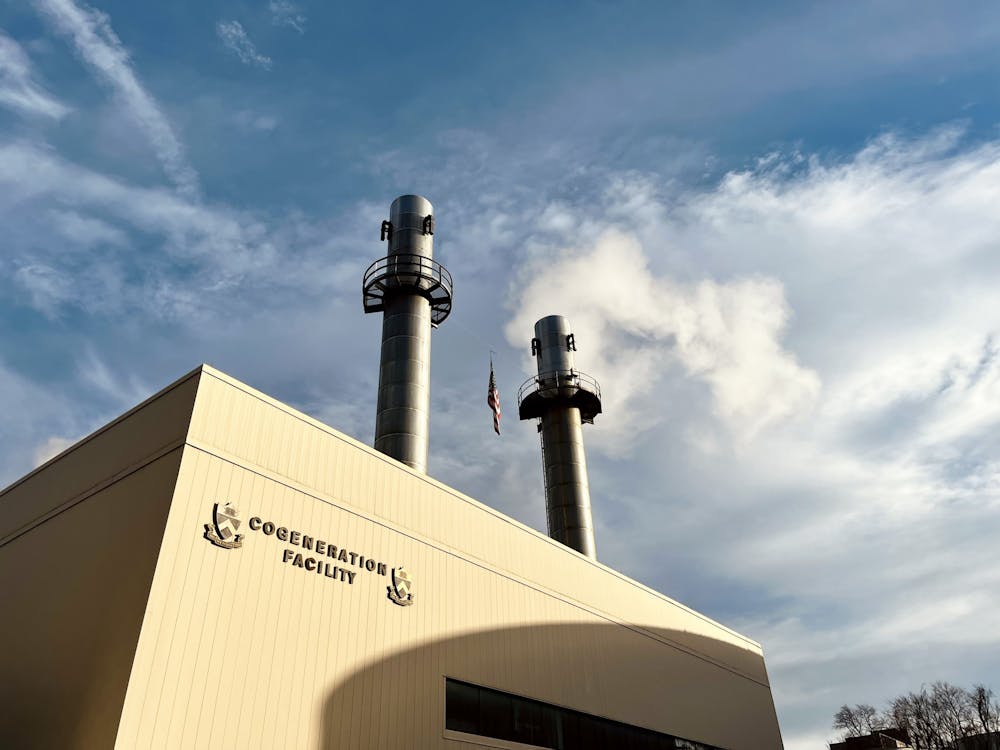On a chilly day, as students meander down Elm Drive heading south to the new colleges for a meal, or perhaps rushing to class, they might be consumed in conversation or music. But if any of the passersby happened to look up, they might notice a plume of water vapor billowing from a nearby pipe attached to a squat, rectangular building.
This structure is Princeton’s cogeneration plant, and through the combustion of natural gas, it has been heating, cooling, and providing electricity to Princeton’s campus since 1996. The campus is in a moment of energy transition as the University builds a geo-exchange system that will become the primary energy system over the course of the next decade. On a tour of the cogeneration plant, The Daily Princetonian saw the energy transition process first-hand and learned about the day-to-day life of the operators who have been working to power the University’s buildings for years.
In the context of natural gas, combustion refers to the burning of natural gas to produce heat, as well as various chemical byproducts. The cogeneration plant uses this reaction to generate heat and electricity simultaneously. The plant can take credit for the refuge in warm classrooms or residential colleges that students are guaranteed on a chilly day.
In an interview with the ‘Prince,’ Tom Nyquist, Executive Director of Facilities Engineering and Campus Energy, explained how geo-exchange will improve upon the existing cogeneration system. In the summer, as the cogeneration plant provides air conditioning to campus by sending cold water to buildings, that water picks up heat from the atmosphere as it returns to the plant. “We have to get rid of the heat. Traditionally, we just blow it into the atmosphere,” said Nyquist.
The geo-exchange system will take that excess heat and press it into the ground through a heat exchanger, which will warm up the bedrock beneath campus. In the winter, the system will harvest the stored energy and send it back in order to heat campus buildings. “It’s seasonal storage,” Nyquist explained. “We’re recycling the heat from summer into winter.”
Even after the geo-exchange is fully installed, the cogeneration system will continue to run in extreme weather conditions to save the University the cost of purchasing energy from the regional power grid. The cogeneration plant will remain a critical part of the campus energy network, serving as a back-up for the geo-exchange.
Energy Plant Director Ted Borer gave the ‘Prince’ a tour of the cogeneration plant to explain its inner workings and where the new geo-exchange network will fit in.

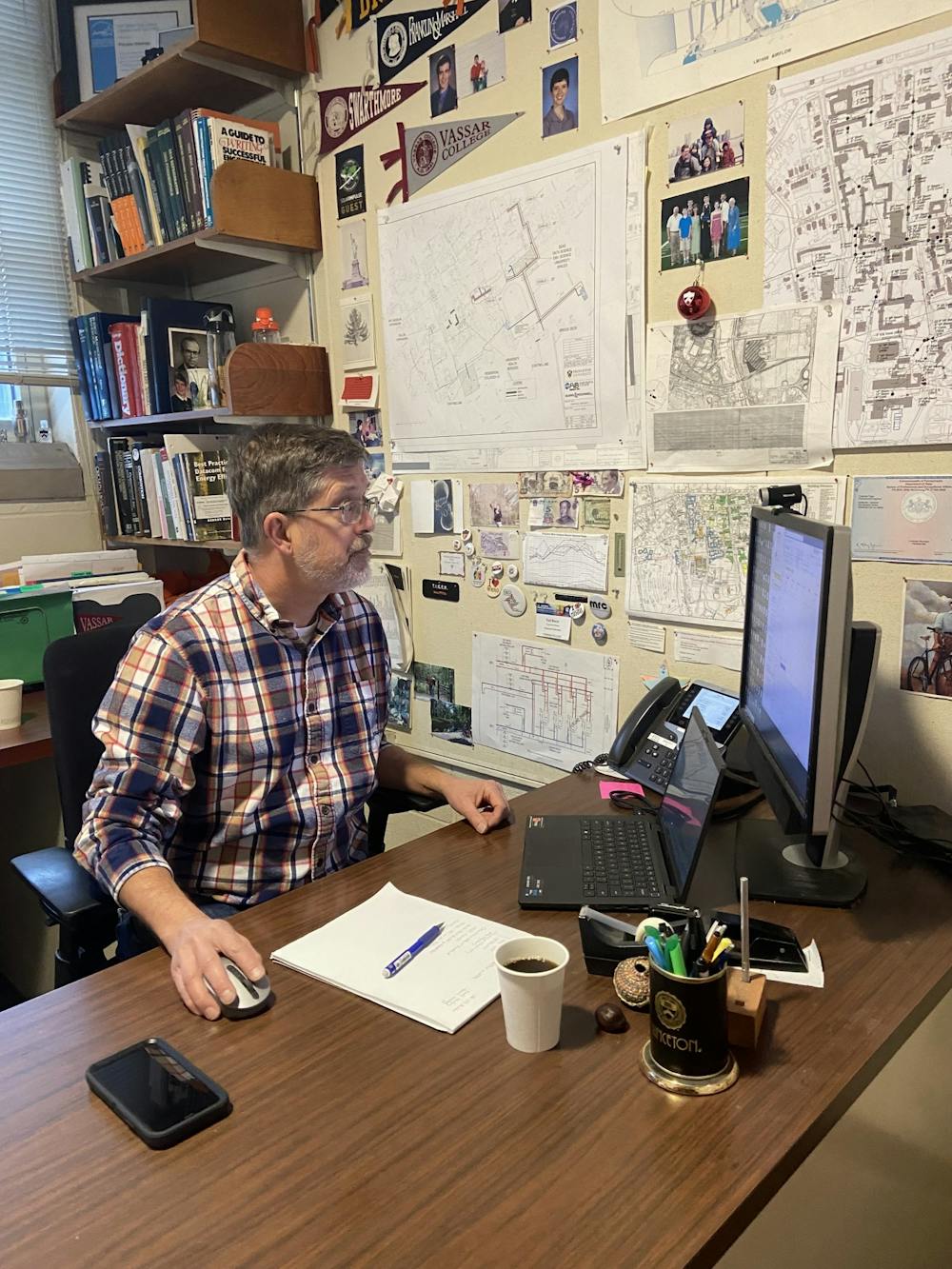
Ted Borer, Director of the Energy Plant, in his office.
Alex Norbrook / The Daily Princetonian
After entering the warm building and adjusting to its industrially lit interior, visitors are greeted by a twisting maze of colorful pipes lining the ceiling and walls: greens, blues, reds, purples, and oranges.
The pipes are color-coded to represent specific purposes, helping both plant workers and outside contractors understand the system. “And almost as a tertiary thing, it’s kind of sweet for tours,” said Borer. “It makes it pretty.”

“The purple pipe goes down to the thermal storage out back. The green pipe goes up and helps this [large chiller] evaporate water and throw heat away,” he explained.
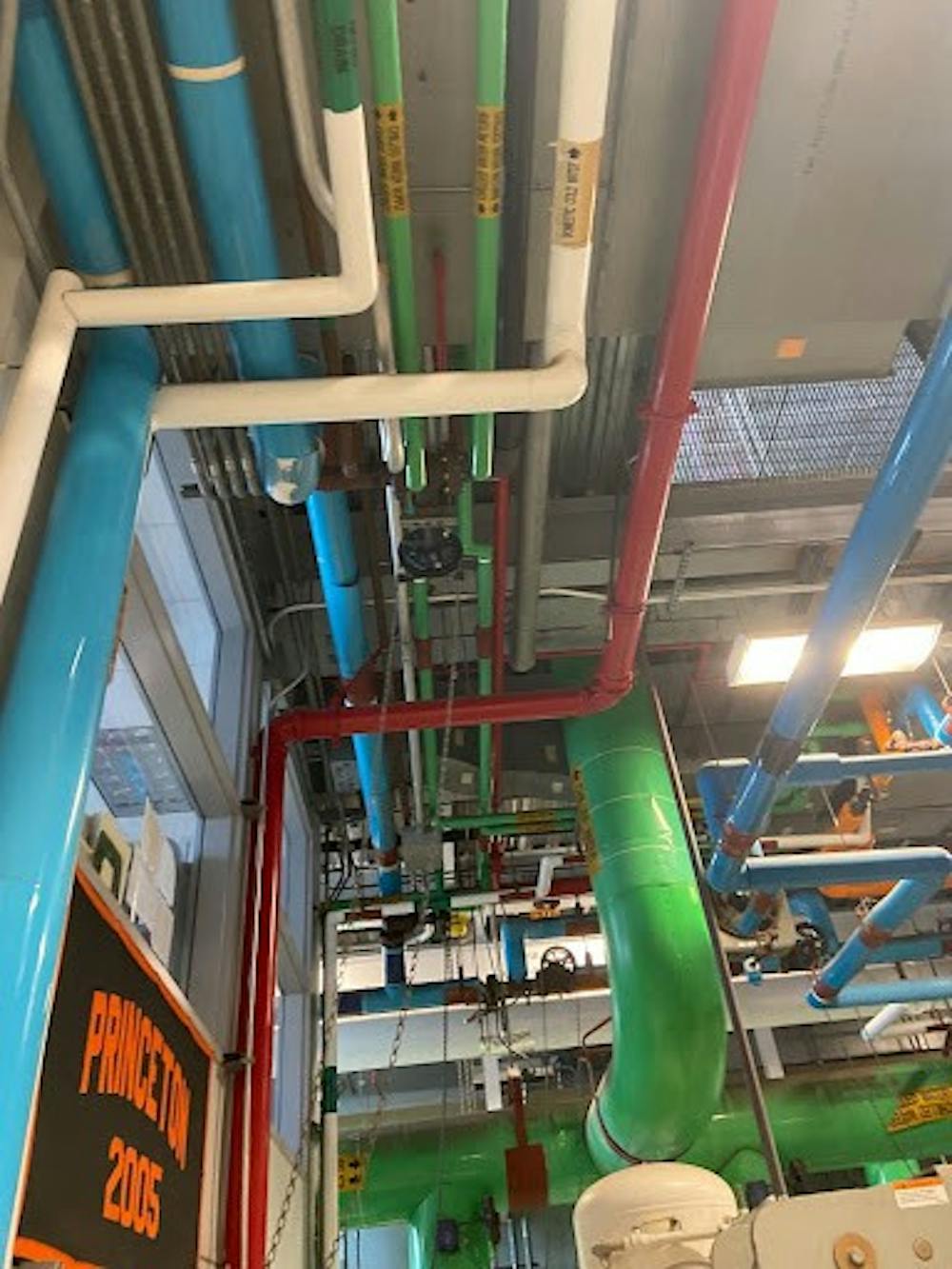
Various water pipes within the cogeneration plant, transporting water and heat across campus.
Alex Norbrook / The Daily Princetonian
As geo-exchange is gradually installed over the next decade, the plant will be renovated to make way for new pipes and structures. Borer pointed to a large empty space in the plant where the team is planning to install their next chiller and has already allotted a spot to connect the new pipe to the larger system.
“We’ve already thought through where the electricity comes from, what size [the chiller] would be, where the pipes would connect up,” Borer explained. “We try to plan one or two chess moves ahead of wherever we are now,” he added.
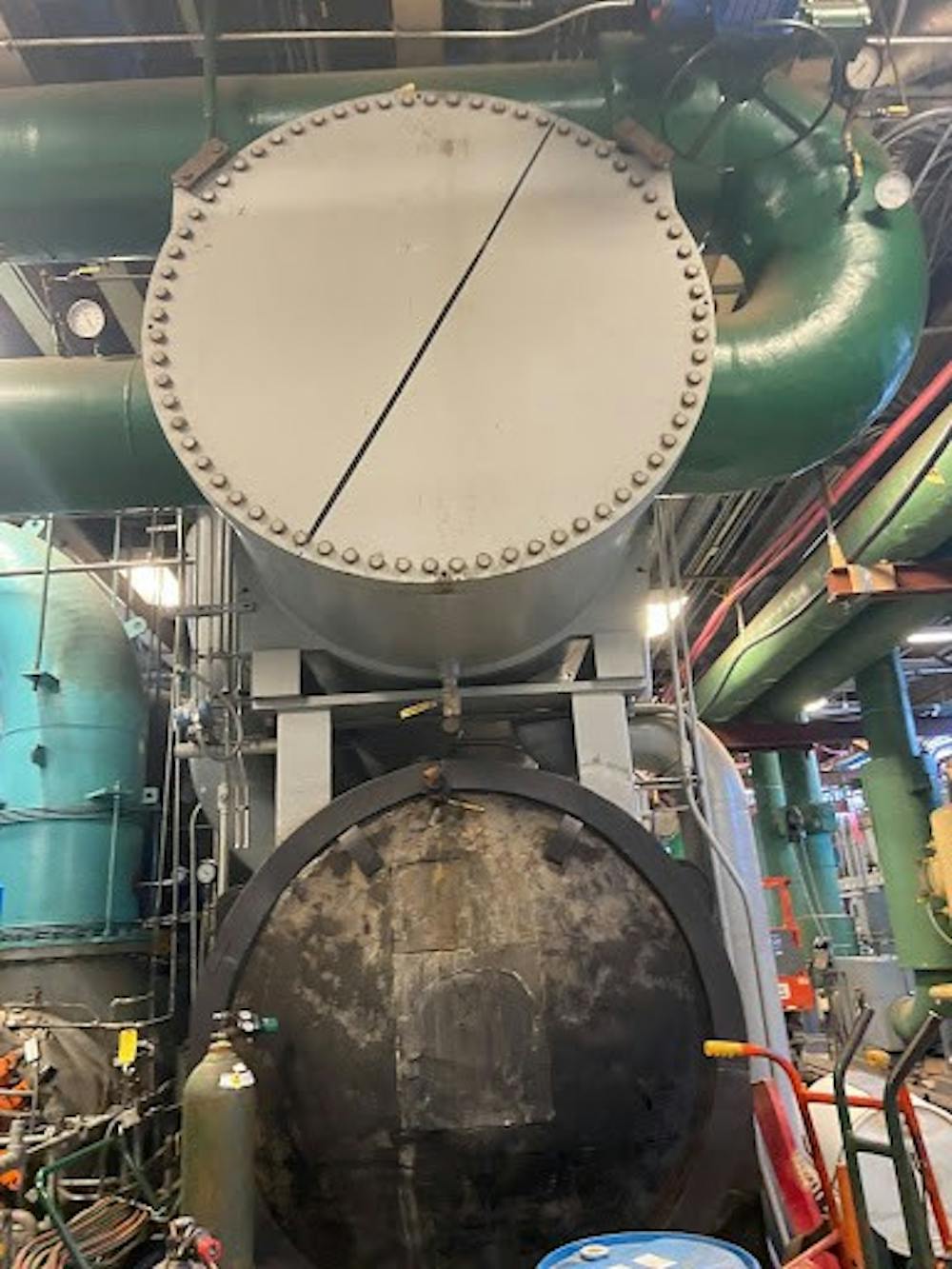
A green pipe connects to a large chiller, which helps to evaporate water.
Alex Norbrook / The Daily Princetonian
Moving briefly outdoors, Borer pointed out the 12 squat cooling towers from which heat from water coming out of the energy plant is ejected.
“I want everyone when they look at a cooling tower going forward to think of that as an energy throwaway machine,” Borer said. When chilled water rushes through the cogeneration plant, it captures heat which the cogeneration system rejects instead of using. “In the future, that should make us cry,” Borer added.
Borer then led the way into a small control room which, according to him, has “never been unstaffed for 25 years.”
At the time of the tour, this duty fell to Lead Engineer Erick Maier. While on shift, Maier is tasked with making sure that all of the equipment is operating safely and reliably. He also considers the most cost-effective way on a daily basis to deliver heating and cooling to all of Princeton’s campus, which is made up of over 180 buildings. These jobs require both engineering experience and multiple years of apprenticeship.
Reflecting on the skills required to perform the job, Borer and Maier reflected on the extent to which they each use math in their work.
“I was talking about this last night. Teachers don’t teach you how applicable [math] is. If they would have taught people what they were interested in, from race cars to energy plants, people would have been paying a lot more attention in math,” said Maier.
“I never use calculus,” noted Borer. “I had to study it all the way up through grad school. I never use it. No, I mostly use a four function calculator.”
Though artificial intelligence (AI) has advanced to the point where the system could run on its own, Borer and his team maintain the importance of human insight. The plant’s control systems make recommendations to a human operator, but the technology does not automatically carry out functions without human approval.
“A lot of our peers would [automate these systems],” said Borer. “We, in this plant, choose not to.”
For example, AI might be able to control a chiller, but lacks awareness of when people are working on the chiller, potentially activating the machinery automatically and frightening or even harming workers. Additionally, the operator walks around the plant, takes notes, and writes the numbers manually in order to keep track of them and catch any issues. These judgments factor in human senses, vibration, plant instruments, and experience.
“We want key decisions to go through the human brain. We intentionally involve a human in decisions that many other people would automate,” noted Borer.
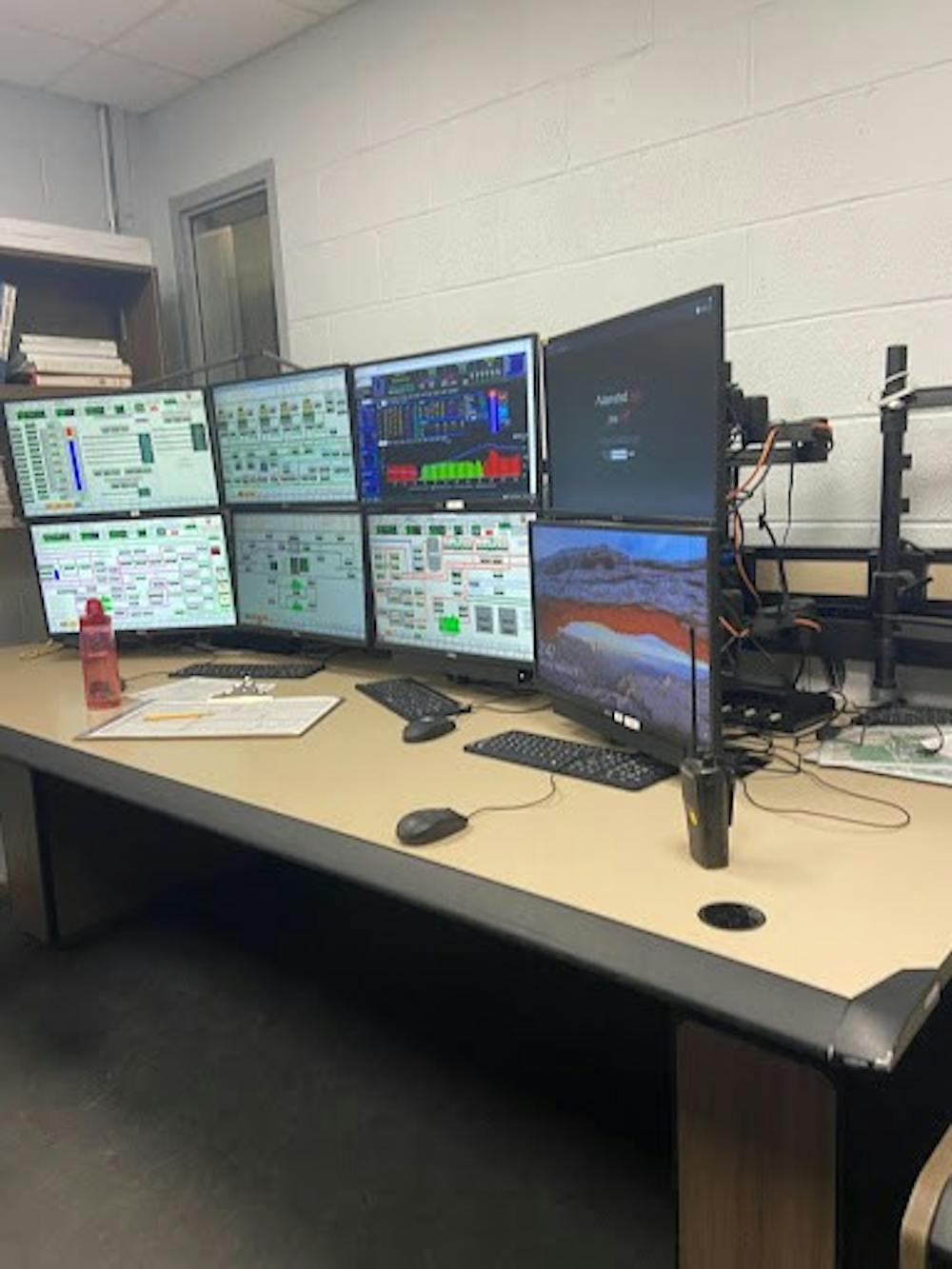
Computer screens from the cogeneration plant control room.
Alex Norbrook / The Daily Princetonian
Next, Borer led the way upstairs, where red and orange pumps push water from the plant “all the way to the E-Quad or to the Berlind Theatre and back.”
When the plant was built in the early 1960s, it was all steam-driven. Pointing out two steel machines from 1964 and 1967 respectively, Borer said, “We take really good care of our stuff, so usually we get rid of it not because we broke it, [but] because it’s either too small or too inefficient.”
Borer showed how the pumps could be dated: two dull silver pumps remain from the 1960s, while brighter red pumps have been installed more recently.
Seeing a juxtaposition between the past and the future, Borer pointed to a “physical place of transition” between the old chillers that reject heat to the cooling towers and a new chiller that will pull heat out of the chilled water and deliver it to a hot water system. Over the next six months, the plant will begin operating new equipment, such as a new chiller which will work in conjunction with the geo-exchange.
Borer brought the ‘Prince’ to another control room, which was occupied by cogeneration plant operators Mike Luling and Glenn Warner. These workers operate the plant along with Maier and the other manual operators, but are focused on combustion, combustion safety, and making steam and electricity. The teams regularly communicate with one another to make decisions about which aspects of the system to run. The operators strive to make economically sound decisions while protecting the life of the equipment by turning engines on and off as infrequently as possible.
Just outside the control room, Borer showed the ‘Prince’ an old campus map displayed on the wall showing the old chapel, McCosh Hall, Dickinson Hall, and Princeton’s old energy plant.
“They had the most awesome name for a power-generating plant back then: the Dynamo building. I love that,” said Borer.
The Dynamo building was constructed in 1880 next to the Class of 1877 Biological Laboratory, and it burned coal to produce steam and electricity for campus. Borer described a time when coal was delivered to the plant by horse-drawn carriage and shoveled into the basement of the Dynamo building.
Reflecting on the old map, Borer pointed out the parallels that tie Princeton’s current energy landscape to the coal-burning system of the 1800s. As the plant’s director explained, workers in the old energy plant were having the same conversations, from scheduling shifts and weekend plans to ordering new equipment and maintaining the facilities.
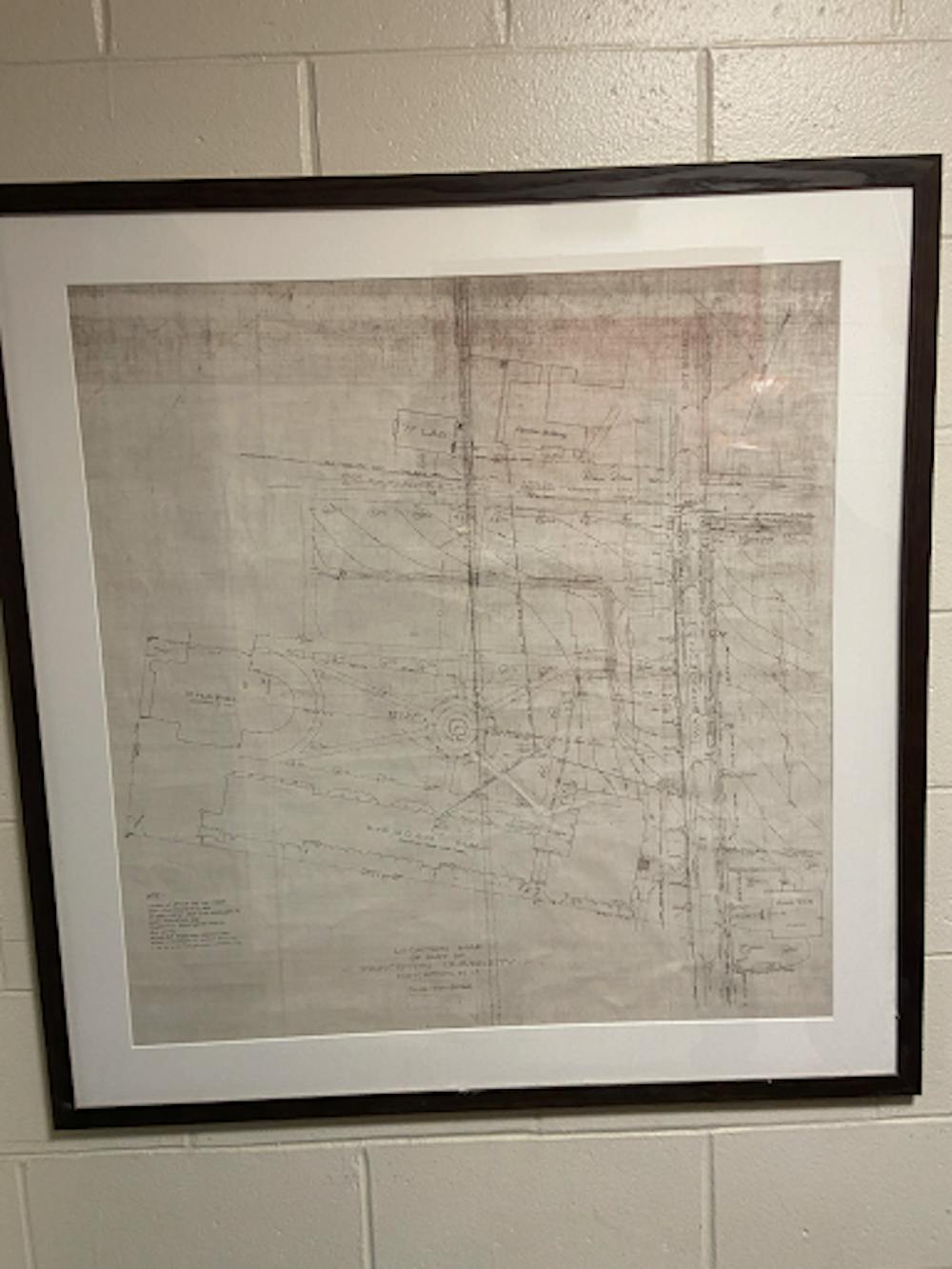
An old campus map displaying buildings including old chapel, McCosh Hall, and Dickinson Hall.
Alex Norbrook / The Daily Princetonian
Borer said he hopes people feel a sense of stewardship over centuries and across generations.
“There’s a direct continuity of the work that happened back then to what we’re doing today and what we’re doing next,” remarked Borer. “And what we’re doing is very meaningful: we’re providing heating, cooling, and comfort to a community of over 15,000 people — and, we’re striving to do it as sustainably as possible.”
This is part one of a two-part series on Princeton’s cogeneration plant. The second part will be released in the coming days.
Raphaela Gold is a staff Features writer for the ‘Prince.’
Please direct any correction requests to corrections[at]dailyprincetonian.com.





